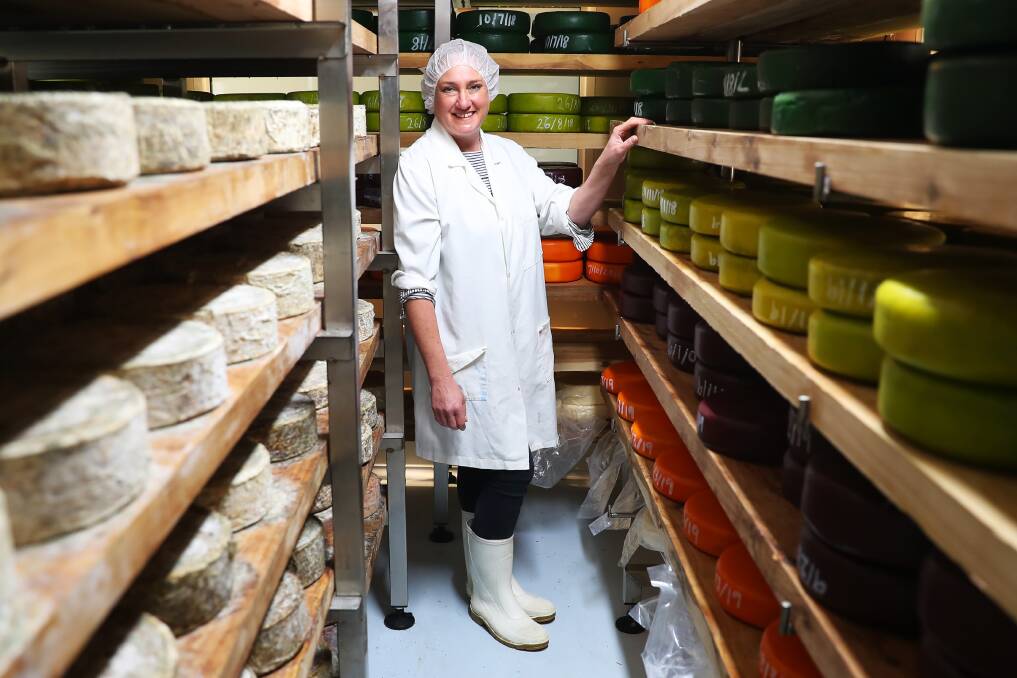Exploring Melbourne Made Cheese: Why Floridia Cheese Is a Must-Try
Exploring Melbourne Made Cheese: Why Floridia Cheese Is a Must-Try
Blog Article
Opening the Secrets of Artisanal Cheese Making: A Detailed DIY Overview
In the realm of cooking craftsmanship, artisanal cheese making stands as a testament to the delicate balance in between practice and technology. Each action in the procedure, from choosing the ideal milk to perfecting aging strategies, holds within it a riches of expertise passed down through generations. As we start this trip to debunk the art of creating charming cheeses, we are confronted with a tapestry of secrets and skills waiting to be untangled. Join us as we discover the intricacies of this ancient craft, where perseverance, art, and science converge to produce tastes that entice the senses.
Picking the Right Milk
When beginning on the journey of artisanal cheese production, the selection of milk plays an important duty in determining the quality and qualities of the final product. The kind of milk chosen influences the taste, structure, and generally profile of the cheese.
When choosing milk for cheese making, it is very important to take into consideration the fat material. Higher fat web content in milk can result in a creamier and richer cheese, while lower fat content might lead to a drier and firmer appearance. Additionally, the resource of the milk, whether from cows, goats, sheep, or buffalo, adds unique tastes and attributes to the cheese (Cheese Makers Melbourne). Each type of milk brings its very own nuances, permitting a large range of cheese varieties to be crafted based on the selected milk. Eventually, the option of milk is an essential choice that establishes the structure for an effective artisanal cheese-making undertaking.
Culturing and Coagulating
To launch the cheese-making process, the crucial actions of culturing and coagulating have to be very carefully executed to transform milk right into curds and whey. The type of culture utilized can considerably impact the taste, texture, and ripening of the final cheese item.

The timing and temperature control throughout culturing and coagulation are vital variables that influence the last outcome of the cheese. Proper implementation of these actions is vital to make sure the desired structure, taste, and uniformity of the artisanal cheese being created.
Draining and Pressing Curds
After the milk healthy proteins have actually coagulated and the curds have been cut to launch whey, the following crucial action in artisanal cheese making involves draining and pressing the curds to attain the wanted structure and uniformity of the final cheese product. The time for draining pipes can differ depending on the kind of cheese being made and the wanted moisture web content.
Pressing aids expel any continuing to be whey and compacts the curds to form a solid cheese wheel. Appropriate pressing and draining are important actions that significantly influence the high quality and qualities of the artisanal cheese being try this site generated.
Aging and Flavoring Techniques
Carrying out thorough aging and flavor strategies is crucial in enhancing the deepness and complexity of artisanal cheeses, elevating their taste accounts to charming levels of refinement and sophistication. Aging plays a crucial function in establishing the unique tastes and structures that distinguish artisanal cheeses. During the aging procedure, cheeses are kept in thoroughly managed environments where aspects such as temperature level, air flow, and humidity are adjusted to motivate the growth of helpful molds and germs. This regulated environment permits the cheese to mature gradually, developing abundant flavors and complicated scents.
Seasoning techniques additionally add dramatically to the final preference of artisanal cheeses. Cheesemakers may select to introduce additional flavors by integrating active ingredients such as herbs, seasonings, and even fruits right into the cheese throughout the manufacturing procedure. Additionally, some cheeses are cleaned or rubbed with various fluids, such as brine or alcohol, to improve their tastes and appearances.
Wrapping and Storing Cheeses

Final Thought
In verdict, grasping the art of artisanal cheese making involves meticulously selecting the ideal milk, adhering to accurate culturing and coagulating processes, draining pipes and pushing curds effectively, and using numerous aging and flavor methods. Keep in mind to wrap and store your cheeses effectively to make sure optimal flavor and appearance development.
Each type of milk brings its very own subtleties, permitting for a vast range of cheese ranges to be crafted based Discover More on the picked milk.After the milk healthy proteins have actually coagulated and the curds have been cut to release whey, the following important action in artisanal cheese making entails draining and pushing the curds to attain the preferred appearance and consistency of the last cheese product. Many cheeses need to be covered in wax paper or cheese paper to permit them to breathe while securing them from drying out. For cheeses that need to proceed aging, such as bloomy peels or cleaned skins, ensure they are stored in a cool setting like a cheese cave or a fridge established to the suitable temperature level. By paying interest to the covering and storage of artisanal cheeses, cheese manufacturers and fanatics can preserve the stability of these specials and fully appreciate their intricate tastes.
Report this page